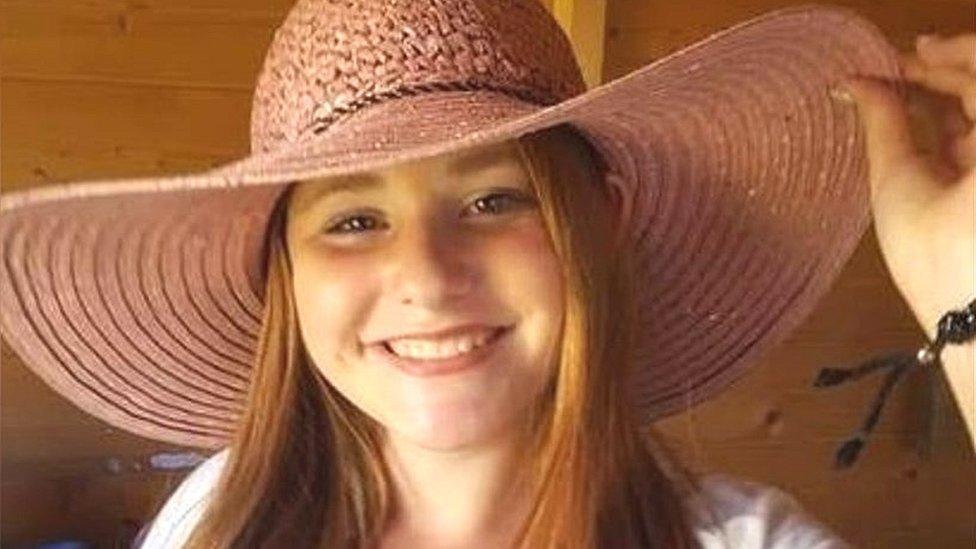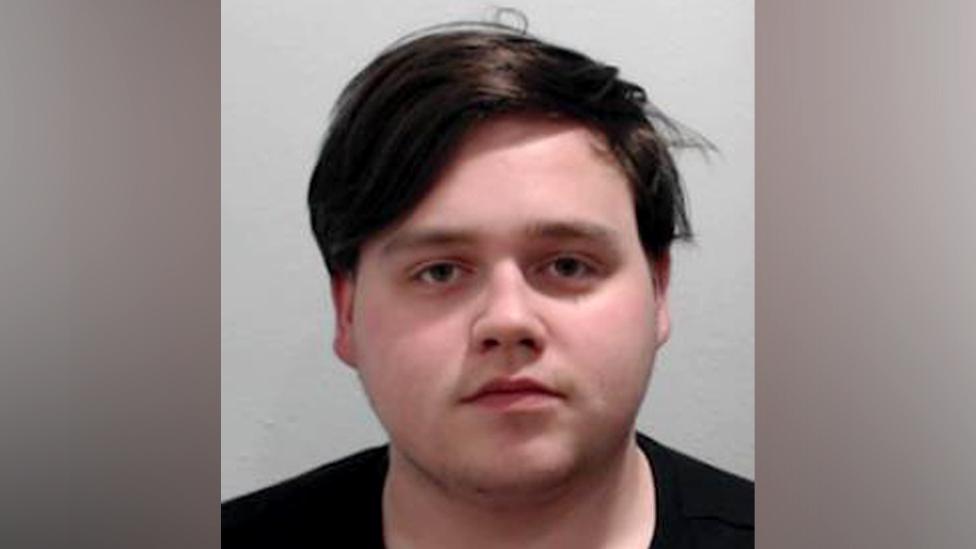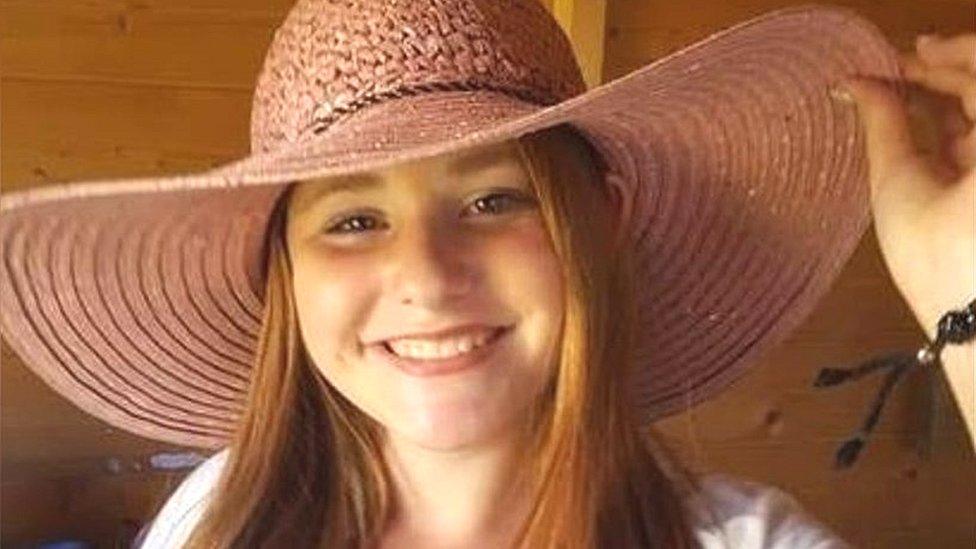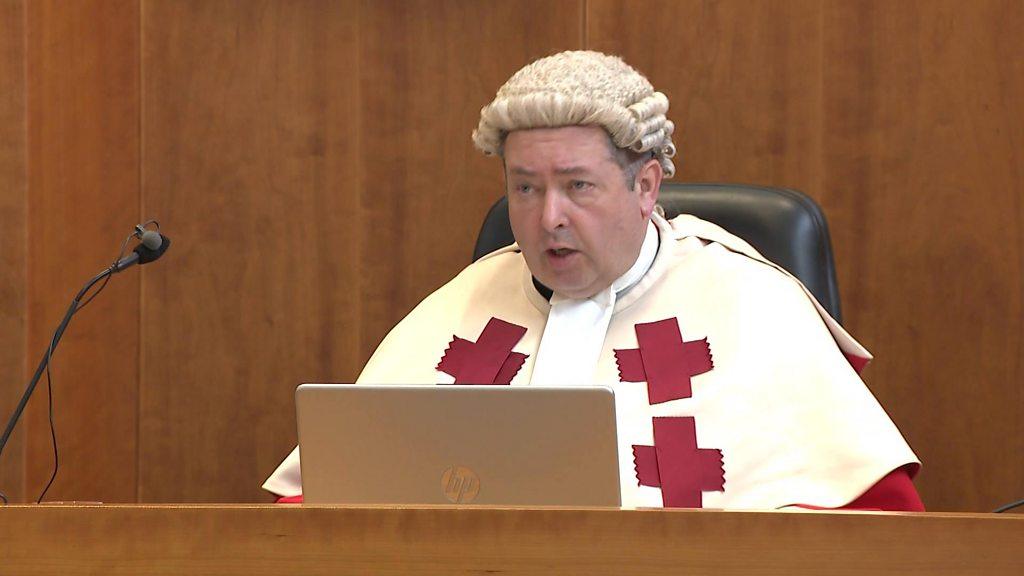Amber Gibson: Review says murder could not have been predicted
- Published

Amber Gibson's body was found at Cadzow Glen in Hamilton
The murder of a teenage girl by her brother could not have been predicted by professionals involved in their care, a report has said.
Sixteen-year-old Amber Gibson was sexually assaulted and strangled by Connor Gibson in Hamilton in 2021.
A couple who fostered the children previously said they had been "let down throughout their lives by the system".
South Lanarkshire's child protection committee has now published an independent review into the case.
It makes a number of recommendations and identifies areas where lessons can be learned.
Amber was living in a children's home and her brother had been staying at a homeless hostel at the time of the murder.
Amber's body was discovered hidden in bushes in Cadzow Glen, a park near the centre of Hamilton, on Sunday 28 November.
After a 13-day trial at the High Court in Glasgow, Connor Gibson was found guilty of her murder and jailed for a minimum of 22 years.
The court heard that the 21-year-old had strangled Amber then got rid of his clothes and called the children's home where she was staying to pretend she was still alive.
Another man, Stephen Corrigan, was jailed for interfering with Amber's body after finding her remains in the park.
In a separate case, Amber was raped by a man called Jamie Starrs several months before her murder. He was subsequently jailed for 10-and-a-half years.
Amber and Connor Gibson were taken into care when Amber was three and her brother was five.
'Not a good mix'
The report said that both of them had been seriously affected by the "extreme trauma" they had experienced until they were removed from their birth parents. They were then fostered by Craig Niven and his wife Carol.
Mr Niven told the murder trial that the siblings could not be left in each others' company as they were "not a good mix".
After Connor Gibson was found guilty of murder, Mr and Mrs Niven described Amber as the "most giving, caring, loving, supportive and admirable person".
They said that the siblings had both been "let down throughout their lives by the system".
The independent learning review said that all the professionals who worked with Amber and her brother had their health and wellbeing "at the core of their work".

Connor Gibson was found guilty of murder after a trial last year
It said they worked hard to engage with both siblings when they were worried about their safety.
But it added that both children struggled to cope with changes to the social workers and other professionals dealing with them after 2018.
The report concluded that Amber's death could not have been predicted by those involved in their care.
But it did identify "practice and organisational learning" and made a number of recommendations.
A decision was taken in 2011 that the two children should not be staying together and that an alternative placement should be found for Conor Gibson.
However, there was "no evidence" that alternative accommodation was looked for and they both continued to live in the same care placement.
'Deeply distressing'
The report also highlighted that there was no recognised framework to bring agencies together to assess and manage young people who may be displaying harmful sexual behaviour.
It recommends that this should be put in place to support early intervention and identify risks.
South Lanarkshire's director of health and social care, Professor Soumen Sengupta, said the circumstances of Amber's death were "truly terrible and deeply distressing".
He welcomed the findings of the learning review and said that all agencies involved were committed to responding to its recommendations.
"Wherever we can make improvements for the children and young people in our care we will strive to do that," he said.
Mary Glasgow, chief executive of the charity Children 1st, said Amber's death had been "a terrible tragedy".
"As a society we need to recognise that the strong commitment and best efforts of workers are not enough to protect children if we do not have the right systems, support and resources in place," she said.
Related topics
- Published4 September 2023

- Published4 September 2023

- Published25 July 2023
